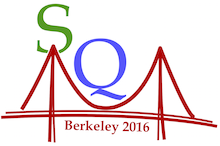Speaker
Pol Gossiaux
(Subatech)
Description
The suppression of upsilon Y(1S) states in AA collisions, observed by the STAR collaboration at RHIC and by the CMS and ALICE collaboration at LHC, is one of the most convincing evidence for the creation of the quark gluon plasma. The precise survival of excited Y(2S) and Y(3S) states vs ground state could even allow to measure the highest temperature reached in those collisions, according for instance to the sequential suppression scenario which is substantiated by calculations of the dissociation temperature based on lattice potentials evaluated at finite temperature.
In our contribution, we address the question of upsilon dissociation resorting to a dynamical approach, i.e. the non-linear Schroedinger-Langevin equation (SLE). In this scheme, the time-dependent real potential implements the Debye-screening while the stochastic forces express the (hard) interactions between the QGP and the $b\bar b$ state, possibly leading to instantaneous dissociation. The SLE preserves unitarity and enables to treat the transitions between bound and open quantum states, which play an important role for excited state final populations. It allows to consider a realistic compact initial state, made of a linear superposition of upsilon eigenstates and to preserve quantum coherence in the time-evolution of the $b\bar b$ pair.
In a stationary QGP, our SLE naturally leads to asymptotic distributions of {Y(1S), Y(2S),...} following correct statistical weights, which allows to make the link with models based on the hypothesis of statistical recombination. This sanity check is a unique feature of our approach.
We will describe the most important properties of the SLE. We will then present the suppression prediction resulting from SLE embedded in state-of-the-art EPOS evolution scenario of the QGP background, both for RHIC and LHC energies. The pT and rapidity dependences of the yields will be discussed.
Ref.: Annals of Physics 368 (2016) 267-295
| On behalf of collaboration: | None |
|---|
Author
Pol Gossiaux
(Subatech)
Co-author
Roland Katz
(Subatech)
